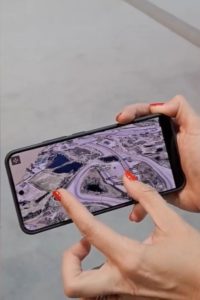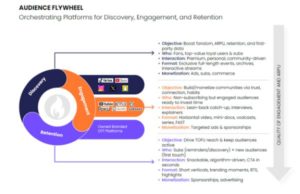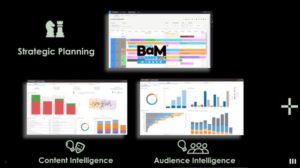Video consumption on OTT platforms has gathered rapid momentum in the last couple of years, peaking significantly in the past few months – thanks to the audience being locked down due to COVID19 pandemic. With so many platforms and so much of content available for consumption today, OTT players are hard pressed for time to create the buzz and differentiation for their shows across media.
Since promos have a major impact on content consumption and hence monetizable impressions, content creators spend a significant amount of time and resources in creating promos and managing promo operations.
The core pillar of OTT distribution is personalization. The audience watch the program on their personal devices, choose to binge watch a series or skip through to another program and platform at their whim and fancy. In order to capture their attention, what is needed is something that’s close to their heart, that’s more personal – rather than a common set of promos.
Let’s say a movie has both the elements of action and romance. The producers need to make promos for each flavour (action and romance) and show to a user based on her natural affinity towards a genre – which her historical viewing patterns can predict.
As a result, the promo team ends up getting requests for creating huge number of different promos for the same piece of content to cater to consumers with different tastes and personas. Since the business is always short on time and resources, and such requests come with very tight turnaround time (TAT), it’s a huge challenge for promo creative and operations teams to cater to such demand.
Promo Creation for General Entertainment Content (GEC)
Creating promos for movies and TV shows is largely a creative task. There are typically 3 approaches to promo creation: 1) Script – shoot – produce 2) Edit and prepare promos from the main show’s available content 3) Combination of #1 & #2 – shoot fresh as well as use available content.
For #2 and #3, significant time is spent in selecting the right content clips from the movie or the episodic that bring the promo script alive. For a given brief/rough script, promo producers and editors scrub through the content a number of times in search of interesting pieces. Once the selected clips are put in the editor’s edit bin, they trim them to create rough cuts that would be part of the final promo. Based on creative grammar, the clips are sequenced in a certain way to bring out the drama and capture viewers’ attention. Next, suitable background music – either from the base content or stock music libraries – is added to the promo. Finally, graphics, special effects and overlay text elements are used to finish the promo.
If you have to repeat the process for a dozen or more times for a single piece of broadcast content, that’s a huge amount of work for the producer/editor.
Artificial Intelligence (AI) and Machine Learning (ML) can come in rescue here. The immediate goal of the AI/ML solution would be to eliminate the manual heavy lifting, free up staff members to focus on more creative pursuits and drive unprecedented scale and speed.
The first and foremost step is to facilitate easy discovery and search of content for promo creation. A combination of 3rd party and homegrown AI engines can be deployed to discover content and extract metadata in the form of keywords, transcripts, sounds and tags. This raw metadata is then synthesized and curated again by another AI engine to make the data accurate and contextual. The final harvested AI metadata is then indexed for an AI-enabled search.
This intelligent search capability enables an editor to search for scenes that she is looking for using Natural Language. Natural Language search is key, as new-age users are accustomed to such features in Google search. For example, for the movie ‘Casino Royale’, an editor can simply search for ‘Bond comes out of the sea, bare chested’.
The AI engine can also generate a smart compilation of clips neatly arranged under theme clusters that are frequently used in promo creation, e.g. action/fights, romance, beach sequences, car chases etc. These readymade compilations enable editors to simply pick a relevant clip without having to explicitly search for it.
The AI-assisted Promo Workflow could look like this:

This new workflow could enhance efficiencies across the promo creation process significantly. In our trials, the time spent on searching for clips itself got reduced by 60-80%. 8 out of 10 times, the AI engine was able to generate results for all the search strings (nuanced, in Natural Language).
What next:
The goal for the next stages of AI development is to automate the promo creation process further. Progressively, the AI engine is expected to match clips to a given promo script.
Promo creation is not just about identifying the ‘magic’ clips. Promo creators also follow certain creative grammar to make the final product impactful. For example, to make the story compelling, an editor needs to build and release tension at certain intervals. Potentially, AI algorithms based on learnings from similar projects can be used for the application of chosen ‘promo grammar’ (specific edit actions etc.). Eventually, AI can further automate the process by applying the right storyboard, background score, bringing audio levelling and transitions within the content and even executing color corrections. Any manual intervention needed afterwards on top of machine generated promos are captured by the system and used for continuous future machine learning.









